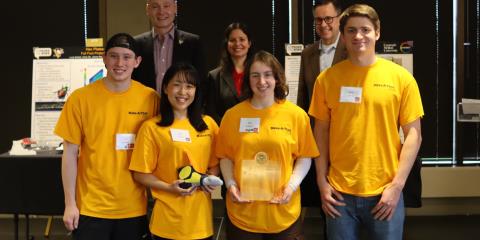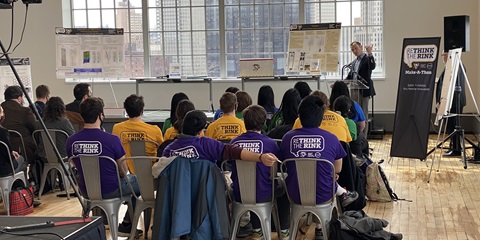
Introducing state-of-the-art dasher board technology designed to significantly improve hockey safety
Did you know that the current hockey rink dasher board design allows for very little, if any, “give” when a player comes into contact with them? In 2018, the first-of-its-kind Rethink the Rink “Make-a-Thon” aimed to tackle this issue, jumpstarting the ideation process around ways to improve player safety without impeding the normal puck play off the boards.
The result? After more than three years of ideating, prototyping, testing and refining, we joined forces with Athletica and the Pittsburgh Penguins to unleash a brand new, state-of-the-art dasher board design. This prototype is not only significantly safer for players, but it does not impede the normal puck play off the board.
The reimagined dasher board design has increased flexibility and movement with a new facing material comprised of our Makrolon® polycarbonate sheeting over an aluminum frame with a polyurethane foam dampening element. This combination allows the boards to flex when hit with body mass but remain stiff when hit by pucks. Renderings courtesy of Athletica Sport Systems.

Now commercially available, the dasher boards – which contain our polycarbonate and polyurethane materials – are equipped to absorb and disperse a portion of the impact when skated into by a player, but remain stiff when a puck makes contact.
The concept was prototyped and tested by dasher board manufacturer Athletica Sport Systems using an automotive standard. Testing on the dasher board system showed:
- Significant increase in absorption on impact
- Up to 65% improvement in some of the key metrics of injury criterion such as acceleration and force
- 150%-450% increase in deflection in comparison to the traditional steel frame design
- Increased energy absorption within the board system, which facilitates distribution of the impact velocity by 40-50 milliseconds
These improvements are critical, as hockey is the only major sport with a fixed board boundary. While playing hockey, pucks and players make frequent contact with the boards with high speed and intensity.

















